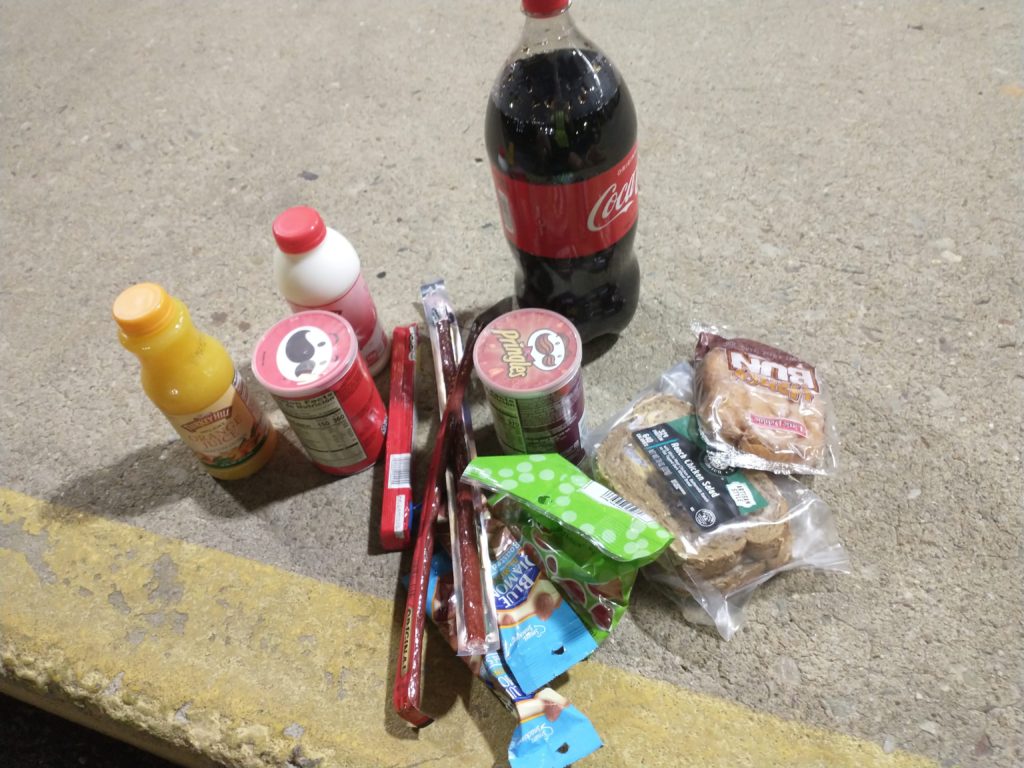It’s said that ultras are glorified eating competitions. The implication being that the person who eats the most will perform the best. While this is obviously a little hyperbolic, it’s not completely so. I was reminded of this yet again at MDLD where I did a less than stellar job of shoving calories into my stomach.
I should probably preface this post by stating that I’ve never had serious nutrition issues in any race that I’ve done. And by serious, I mean my stomach rejecting anything and everything. I’ve heard plenty of horror stories of people who for whatever reason can’t eat or drink anything for hours and hours on end. I can probably count on one hand the number of times I’ve actually thrown up in a race and in all cases, it’s been an immediate control-alt-delete reset of my system. I would love to tell you my secret, however it could be genetics as far as I know. My best guess is that I race at a very low effort and I never push myself to the point where my body just shuts down.
My biggest fueling issue in races is just a lack of motivation to eat, which is what happened 10 days ago. It’s not that I couldn’t eat. I just didn’t want to. This is typically something that creeps up on me slowly over a period of time. I’ll go from eating a little something every mile or so to a little something every couple miles to nothing at all. When I start to wonder when the last time I put something into my mouth, I know I’m in trouble. Then it’s a matter of forcing food into myself whether I want to or not. There are times when I’m in a deep enough funk though where I just shrug and continue on without eating. Non-runners will read that and wonder how you can just stop eating when you’re expending so much energy running (OK fine, walking fast). The truth is you’re just not hungry. It seems counterintuitive that could be possible, but our bodies are just odd when you’re pushing them for so long.
I’ve developed two and a half hacks to keep calories steadily going down. The first is to get as many calories as possible through liquids. There will be times where I don’t want to eat, however I’m always thirsty in races. While sports drinks are good for electrolytes, they’re a little light on calories so I’ve switched to Perpetuem and Coca-Cola as my base fuels. I then supplement with salt pills when it’s hotter out. Worst case scenario (overnight in cool temps) I’m still getting 100-150 calories an hour. While this isn’t enough for peak performance, it’s enough to keep me strongly hiking ahead of cutoffs.
Second is what I call my seven flavors strategy. A while back I noticed I would stop eating because I got tired of pushing the same one or two things down my throat. For the longest time, I would eat whatever I wanted to eat for as long as that was appetizing and then switch whenever that stopped working. Unfortunately, it usually stopped working about 90 minutes outside of an aid station which left me mired in a deep low. I’ve tried to head this off by continually rotating through 7 different foods/flavors. It’s hard to get tired of something when you constantly have something new to try. Typically this means two different fluids and five different foods with a mix of sweet and salty.

My third strategy is to eat a little something every mile. Even if it’s just a couple gummy bears or an orange slice. This one doesn’t get full credit though as the time between calories can get too long when you’re moving really slowly (i.e. overnight in races or over challenging terrain). It’s also easy to get distracted or just ignore the signal to eat. So it works when it works, but not something I’m always successful with.
One of the universal truths of ultra-running is to never try something new on race day. Nutrition is my one exception to this rule. I advise you to eat whatever looks good even if you’ve never tried it during a run or race before. For every food you come across that doesn’t work for you (i.e. bananas and bacon are my kryptonite), you’ll come across many that do (i.e. rice, marshmallow squares, Slim Jims, pancakes).
You’ll hear a lot of people tell you to train your stomach on your long runs. I’ve always wondered how well this works in practice though. Those runs are probably no more than 4-5 hours so how do you train your stomach to accept calories for 2-6x that? Frankly, I can eat anything for the first 5 hours of a run without any issues. It’s always after this that I start getting into trouble. Just be open to changing things up as you go along. You’ll probably also discover that what works in one race may not work in the next. Or what works in cool temperatures is a strong no go when it gets hot out. As in all things ultra, stay flexible and eat/drink whatever seems most appetizing at the time.
Bon appetit!
